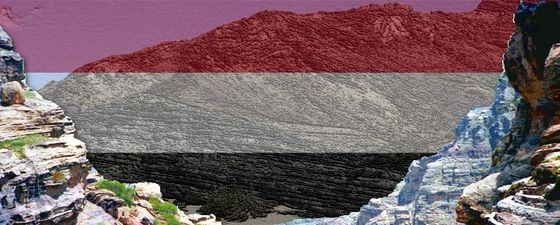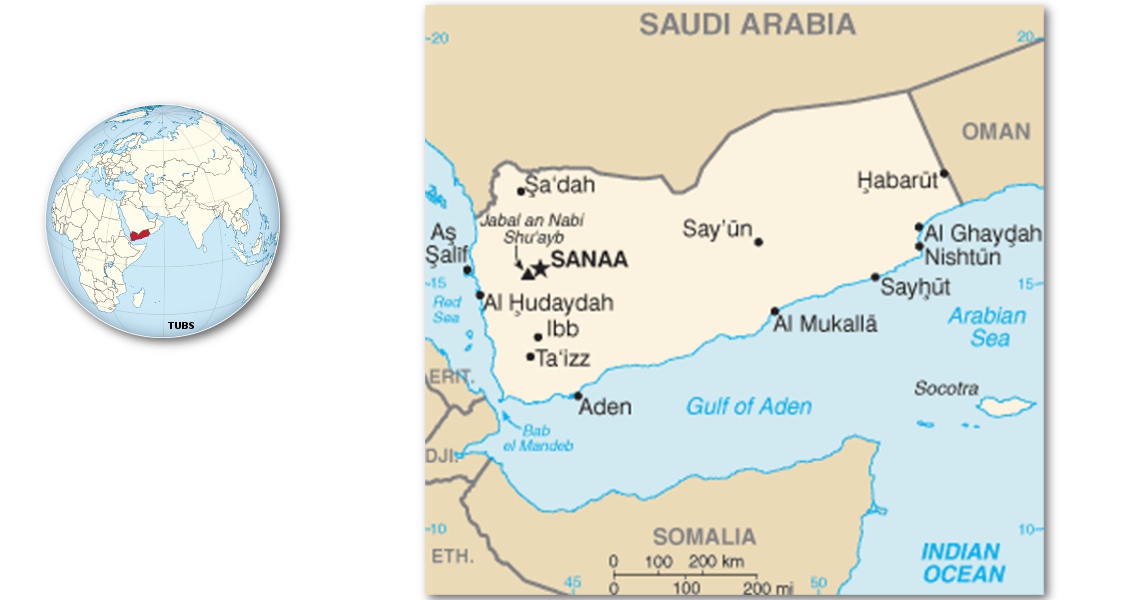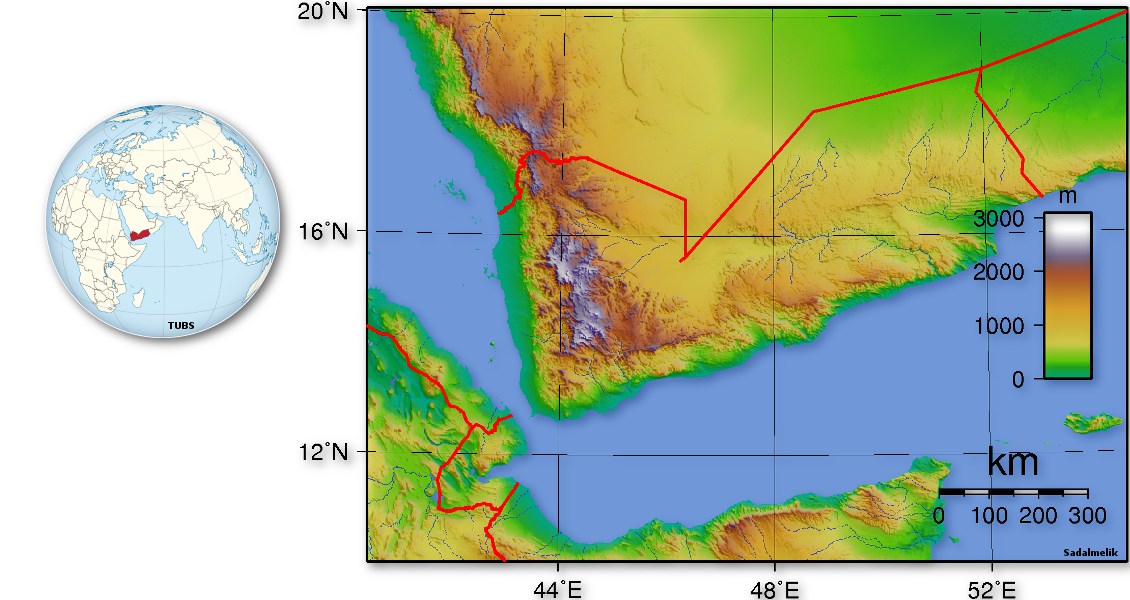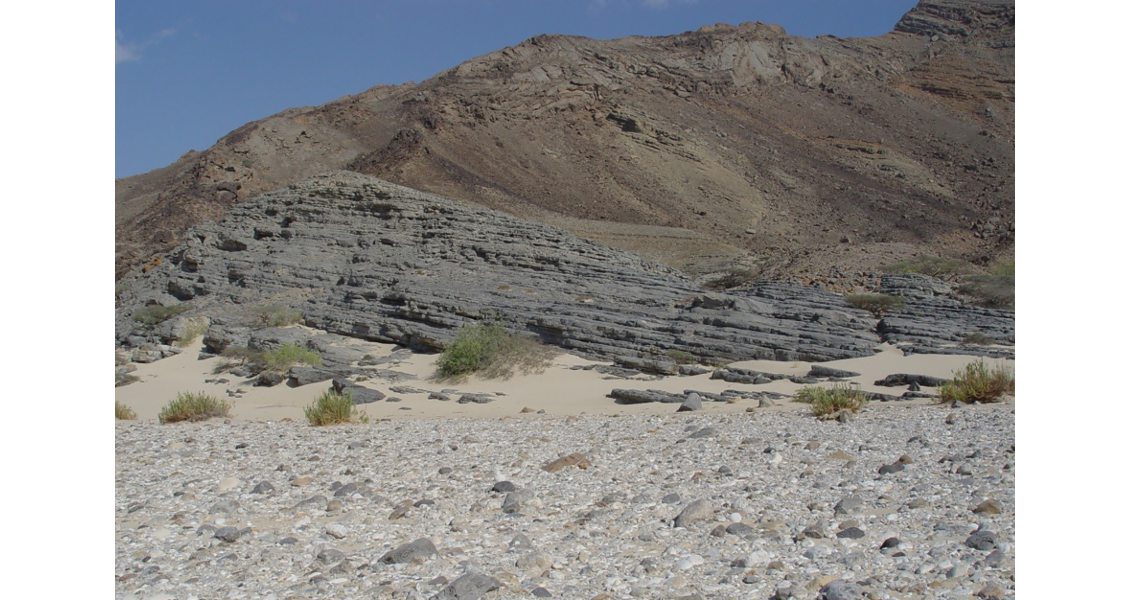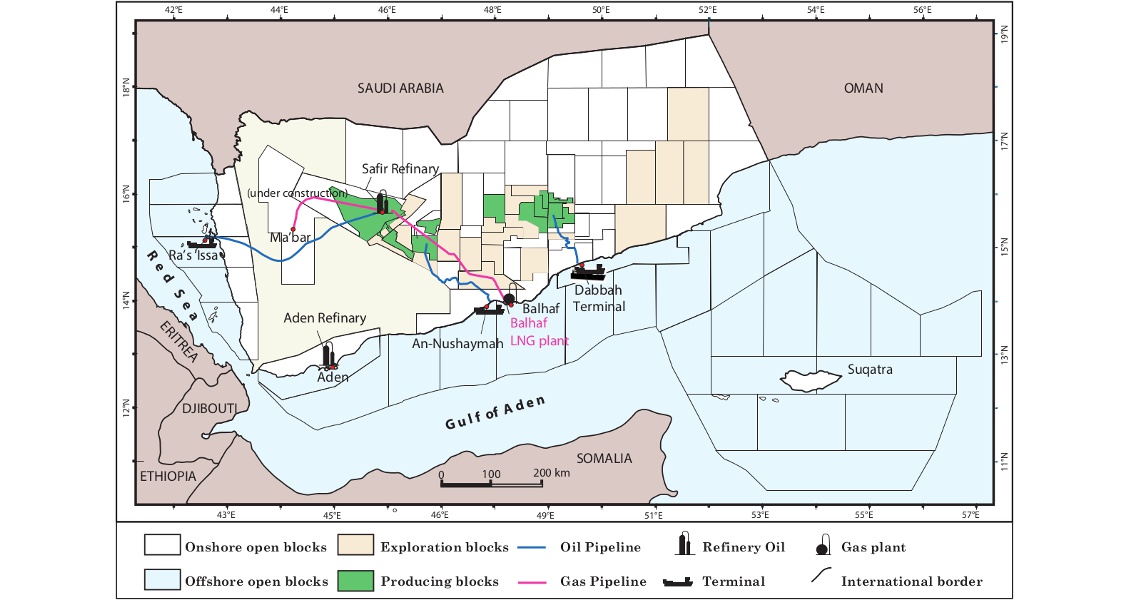“As we climbed, the vegetation grew denser, streams appeared in unexpected clefts, and now and again one of us would exclaim at some new discovery, a spider’s web constructed on perfect Euclidean principles or a caterpillar in poster-paint colours… Near the crest, the vegetation thinned. Limestone gave way to naked granite.” Tim Mackintosh-Smith in Yemen: The Unknown Arabia (2000)
In recent years, Yemen has been engulfed in civil war, violence, and intrusion by religious militants and outside governments (see the complimentary article, Yemen: The Issues). Put this dark, unfortunate image aside, however, and Yemen is a jewel of history and nature on the Arabian Peninsula. Known as the land of the Queen of Sheba, its antiquities are millennia-old, while the high mountains and beaches along the Gulf of Aden and Red Sea present a charming contrast to the desert landscape found over so much of the region. The ancient Romans referred to Yemen as Arabia Felix: ‘Happy’ or ‘Blessed Arabia’.
Plenty to Explore
Geological surveying and petroleum exploration in Yemen date back to the early decades of the 20th century (see Oil Exploration in Yemen). From the 1930s–60s, the Iraq Petroleum Company conducted exploration in the Hadramawt and Mahrah areas in north-east Yemen, during which period Ziad Rafiq Beydoun (1924–1998) pioneered geological studies of the country. In 1962 and 1967, respectively, two separate states, pro-West North Yemen and pro-Soviet South Yemen, were formed.
 Sedimentary basins of Yemen and their classification according to the geologic era in which they formed. Palaeozoic basins: (1) Rub’ Al-Khali (the southern flank of a much larger basin extending into Saudi Arabia; (2) San’a; (3) Suqatra (an island in the Gulf of Aden). Mesozoic basins: (4) Siham-Ad-Dali’; (5) Sab’atayn; (6) Say’un-Masilah; (7) Balhaf; (8) Jiza’-Qamar. Cenozoic basins: (9) Mukalla-Sayhut; (10) Hawrah-Ahwar; (11) Aden-Abyan; (12) Tihamah. (Source: As-Saruri & Sorkhabi (2016))During this time, Pan American Oil continued exploration in Hadramawt (in South Yemen) and drilled a number of wells, with the non-commercial discovery of several barrels of oil from the fractured carbonates of the Cretaceous Qishn Formation in Tarfayt-1. Drilling on the Tihamah Plain in the 1960s by US company John Mecom produced oil shows in Zaydiyah-1.
Sedimentary basins of Yemen and their classification according to the geologic era in which they formed. Palaeozoic basins: (1) Rub’ Al-Khali (the southern flank of a much larger basin extending into Saudi Arabia; (2) San’a; (3) Suqatra (an island in the Gulf of Aden). Mesozoic basins: (4) Siham-Ad-Dali’; (5) Sab’atayn; (6) Say’un-Masilah; (7) Balhaf; (8) Jiza’-Qamar. Cenozoic basins: (9) Mukalla-Sayhut; (10) Hawrah-Ahwar; (11) Aden-Abyan; (12) Tihamah. (Source: As-Saruri & Sorkhabi (2016))During this time, Pan American Oil continued exploration in Hadramawt (in South Yemen) and drilled a number of wells, with the non-commercial discovery of several barrels of oil from the fractured carbonates of the Cretaceous Qishn Formation in Tarfayt-1. Drilling on the Tihamah Plain in the 1960s by US company John Mecom produced oil shows in Zaydiyah-1.
During the 1970s and 80s both North and South Yemen began offering concession blocks to a number of foreign oil companies. The first commercial discovery came in 1984 when the American company Hunt Oil drilled Alif-1 in the Marib sector of the onshore Sab’atayn Basin in North Yemen, penetrating a total depth at 4,182m and hitting oil (40.4º API) in the Alif Member of the Sab’atayn Formation (Middle–Upper Tithonian age) with an initial flow of 7,800 bopd. In 1986, the Russian company Techno-Export, which was operating in South Yemen, drilled West Ayad-1 in the Shabwah sector of the Sab’atayn Basin, encountering 35º API oil in the Jurassic. Petroleum exploration by Canadian company Occidental in another onshore Mesozoic basin, the Say’un-Masilah Basin, led to an oil discovery in 1991: Sunah-1 drilled to the total depth at 2,917m and discovered oil (36º API) in sandstones of the Lower Cretaceous Qishn Formation.
Oil production in Yemen began in the mid-1980s. In 1990, South Yemen and North Yemen were unified, and the new republic further opened Yemen to international markets and oil companies. The country enjoyed a successful period of oil and gas discovery and production during the 1990s until 2005, but Sab’atayn and Say’un-Masilah are still the only producing basins in Yemen.
Producing Mesozoic Basins
Twelve onshore and offshore sedimentary basins have been identified in Yemen, categorised into three groups based on the geological era in which they originated: Palaeozoic, Mesozoic and Cenozoic. Of these, only two, Sab’atayn and Say’un-Masilah, are well explored; the rest remain frontier basins.
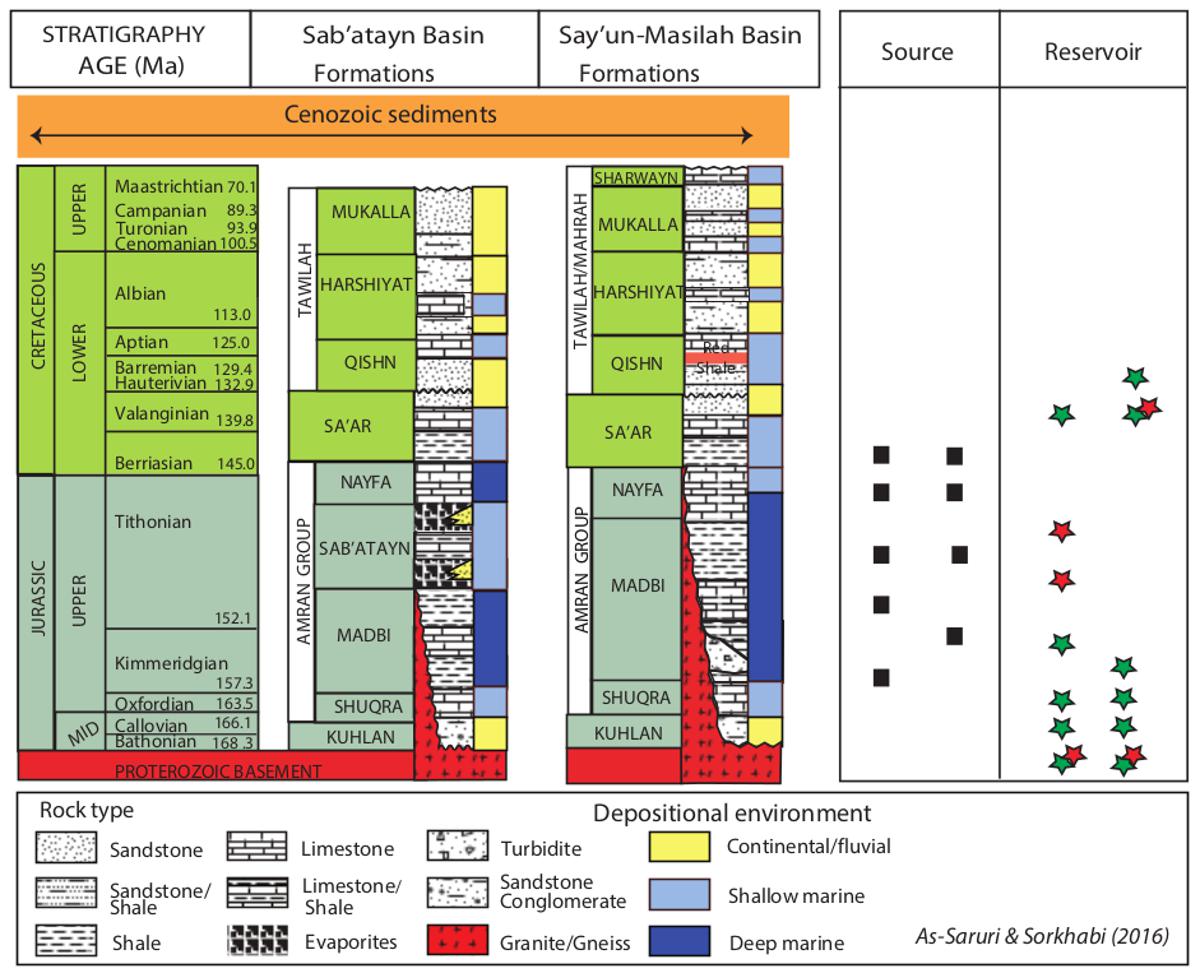 Mesozoic stratigraphy and petroleum systems of Sab’atayn and Say’un-Masilah Basins. (Source: As-Saruri & Sorkhabi (2016))Sab’atayn and Say’un-Masilah Basins: These two basins are parallel rift basins separated by the Jahi-Mukalla High. They developed in Late Jurassic to Early Cretaceous times during the fragmentation of Gondwana. The basins, filled with syn- and post-rift sediments, share many similarities including source and reservoir rocks of Late Jurassic-Early Cretaceous age. Both basins also contain fractured Precambrian granite reservoirs with 41°API oil, charged by downthrown Upper Jurassic shale.
Mesozoic stratigraphy and petroleum systems of Sab’atayn and Say’un-Masilah Basins. (Source: As-Saruri & Sorkhabi (2016))Sab’atayn and Say’un-Masilah Basins: These two basins are parallel rift basins separated by the Jahi-Mukalla High. They developed in Late Jurassic to Early Cretaceous times during the fragmentation of Gondwana. The basins, filled with syn- and post-rift sediments, share many similarities including source and reservoir rocks of Late Jurassic-Early Cretaceous age. Both basins also contain fractured Precambrian granite reservoirs with 41°API oil, charged by downthrown Upper Jurassic shale.
The bituminous shale members of the Kimmerdgian-Tithonian Madbi Formation are the main source rock for the discovered oil fields in the Marib and Shabwah sectors of the Sab’atayn Basin. These rocks are characterised by Type II (dominant) and Type III kerogen; the total organic carbon (TOC) values are generally 3–5%, but locally as high as 20%, with organic matter of mixed marine and terrestrial origin deposited in a moderately anoxic environment. The main source rock in the Say’un-Masilah Basin is also bituminous shale and carbonate within the Madbi Formation. These sediments are up to 450m thick and have TOCs as high as 18%. Immediately overlying the Madbi Formation, Upper Jurassic shale units in the Nayfa Formation have also been found to be a potential source rock with TOCs over 1% and vitrinite reflectance values in the range of 0.4–0.5% (for example in the exploratory wells Sunah-1 and Ghayl Bin Yamin-1).
One significant difference between these two basins is that Tithonian-age evaporite beds are absent in the Say’un-Masilah Basin while the intra-salt sandstones and sub-salt turbidites offer significant oil accumulations in the Sab’atayn Basin. Another difference is that the Lower Cretaceous sandstone of the Qishn Formation is an important reservoir in Say’un- Masilah, but not in Sab’atayn. The initial reservoir pressures in the latter are gas-driven, while those in the Say’un-Masilah Basin are water driven.
Mukalla-Sayhut Basin: The Mukalla-Sayhut Basin lies to the south of the Say’un-Masilah Basin and extends on- and offshore along the Gulf of Aden. It developed during the rifting of the Gulf of Aden in Oligocene-Quaternary times. Regionally, Upper Jurassic-Lower Cretaceous sediments are expected to be present in the Mukalla-Sayhut Basin; indeed, the offshore well Sarar-1 encountered Jurassic shale with TOCs of 1.3–2.5%. Cretaceous source rocks are also identified in the shales of the Mukalla Formation (Turonian to Campanian age) with TOC of 1.7%, and in the marl and limestone of the Fartaq Formation (Albian to Cenomanian age) with TOCs up to 4.41%. The organic matter is Type II. The mudstone of the Ghaydah Formation (Oligocene) has fair source potential in several exploratory wells, including Hami-1, Sarar-1, and Ra’s Ghashwah-1, drilled from 1979 to 1981. The organic matter for these rocks is Type II, with TOCs up to 4.20%.
The pre-rift fractured carbonate rocks (Middle Eocene) and syn-rift sandstone layers (Upper Oligocene) are considered to be good reservoirs. The cap rock is represented by the evaporites of the Rus (Lower Eocene) and Ghaydah Formations as well as shale layers which occur at different levels in the stratigraphic succession. Hydrocarbon potential in this basin is supported by the non-commercial discovery of oil in the fractured limestone of the Middle Eocene Habshiyah Formation in 1982 in well Sharmah-1. This oil is different from the Jurassic oils in that it has a higher gravity (43°API), higher pristane/phytane ratios (between 2.02 and 2.92), and was probably charged from the Upper Cretaceous or Lower Eocene shale or marl.
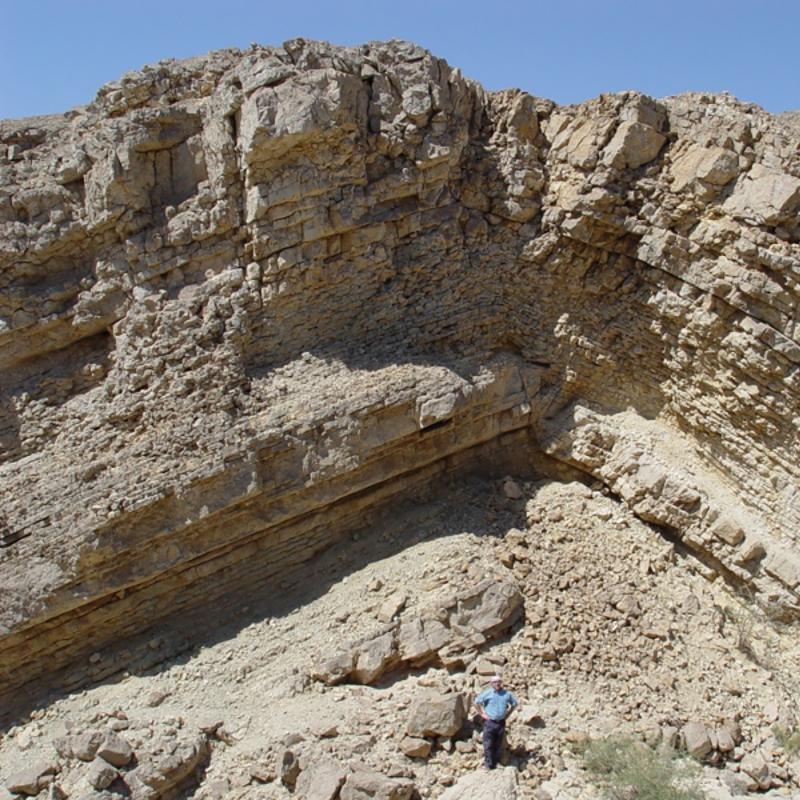 Nayfa formation. (Source: M. As-Saruri)The Balhaf and Hawrah-Ahwar Basins to the south of the Sab’atayn Basin and along the Gulf of Aden remain unexplored but are expected to have similar Mesozoic stratigraphy to Sab’atayn.
Nayfa formation. (Source: M. As-Saruri)The Balhaf and Hawrah-Ahwar Basins to the south of the Sab’atayn Basin and along the Gulf of Aden remain unexplored but are expected to have similar Mesozoic stratigraphy to Sab’atayn.
Jiza’-Qamar Basin: This is the easternmost basin in Yemen. It is separated from the Say’un-Masilha Basin by the Fartaq High on the west, and from the Rub’ Al-Khali Basin by the Hadramawt Arc to the north. The Jiza’-Qamar Basin comprises a 6–8 km thick sedimentary succession with several horizons of good quality source and reservoir rocks. Ar-Rizq-1, drilled in this basin in 2008, encountered a high pressure zone of gas. Recent studies of Upper Cretaceous rocks from the basin by A. S. Alaug of Taiz University in Yemen show encouraging results. TOC values of 24% for mud-rich carbonates have been reported from the Turonian-Campanian Mukalla Formation, with kerogen Types of II and III. The overlying Dabut Formation (Campanian to Early Maastrichtian age) from the same basin yielded kerogen Type-III shale with TOC of 1%. Vitrinite reflectance values from these Upper Cretaceous shale units in well 16/U-1 range between 0.3 and 1.0%, indicating sufficient thermal maturity for oil generation in the onshore Qamar sector.
Tihamah Rift Basin: The Tihamah Basin includes both coastal plains and offshore sediments along the Yemeni Red Sea. It developed during the rifting of the Red Sea in Late Oligocene- Quaternary times, when syn-rift to post-rift sediments of Miocene-Quaternary age were superimposed on a thick succession of pre-rift sediments, including the Jurassic Amran Group (shallow and deep marine shale and carbonates), the Cretaceous Tawilah Group (sandstone and shale deposited in fluvial and shallow marine environments), and the Paleocene-Lower Eocene Majzir Sandstone. The Late Eocene-Oligocene represents a major unconformity in the basin.
There are various lines of evidence of petroleum prospectivity in this basin. Oil seeps have been observed at As-Salif in western Yemen and several exploratory wells have encountered oil and gas shows (for example, in onshore wells Alpha-1 and Abbas-1). The offshore Tihamah exploratory wells have found mudstone source rocks in the Zaydiyah and Maqna Formations (Early to Middle Miocene age) with very high TOC contents: >20% in Antufash-1; 5% and >8% in two intervals in Kathib-1; and >4.76% in Al-Meethag-1. Thin black mudstone associated with salt layers in the Mid-Late Miocene Salif Formation have TOCs up to 4%, deposited in lacustrine and shallow marine environments.
Old Oil, New Oil
If Tihamah represents the youngest petroleum system in Yemen, there is also ‘old’ petroleum potential in the Rub Al-Khali Basin in the north-east, and in the San’a Basin in north-west Yemen. The Siluarian Qusiaba shale, so productive in Saudi Arabia, also extends into northern Yemen. Jurassic plays are other possibilities in these basins as well as in the offshore Suqatra Basin; Permian-Cretaceous rocks outcropped on Suqatra Island.
Proven conventional oil reserves of Yemen (as of 2010) are about 4.731 Bbo, and proven gas reserves are 18.6 Tcfg, and the country still retains good potential for further discoveries. Acquisition of new seismic will reveal better information on the structure and sedimentary succession of the onshore and offshore basins in Yemen.

